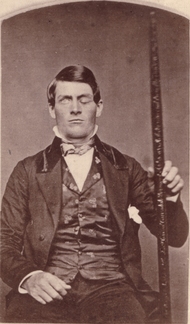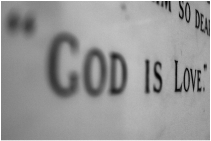WHAT'S THE BIG DEAL?
|
The Scientific Side
|
Science has made many important discoveries about how brain function and genetic factors determine human behavior. As we learned with the case of Phineas Gage, the damage to his brain resulted in a negative change in his behavior and personality. This is one of many examples of the changes in behavior and personality in persons who have experienced brain injury. In recent years, this scientific understanding has been used to defend the violent or aggressive actions of such persons. But many are opposed to the claim of a biological cause for an act of violence, especially in court cases. Click on the link to the right to read about an example of this type of legal defense in the court case of a young teen.
(Click here to read the full article: :http://www.abajournal.com/magazine/article/brain_trials_neuroscience_is_taking_a_stand_in_the_courtroom) As a result of cases like Tiegreen’s, Dr. Owen Jones a professor of law and biology at Vanderbilt University, warns that: “Neuroscientific evidence must be viewed and interpreted cautiously. Once you start going down this path that there’s this quirk in the brain that makes me not responsible for my actions, that makes people understandably concerned,” he says. “It has to be weighed with other evidence.” 1 |
|
In the same way, Stephen J. Morse, a professor of law and psychiatry at the University of Pennsylvania and a member of the research network, has long argued that:
“Brains don’t commit crimes; people do. Morse says that even the latest neuroscientific research and imaging techniques cannot answer questions about responsibility and competence. Today, I think that neuroscience has added virtually nothing really relevant to criminal law,” he says. |
Morse is referring to some of the studies that statistically link brain damage with criminal or aberrant behavior but, in his view, fail to take into account myriad other factors that can contribute, including environmental factors. It’s not that Morse doesn’t believe brain damage can cause people to lose their judgment and inhibitions. His point is that we don’t know whether or how those people try to control their impulses. “Causes are not excuses,” he says. 2
However, as Tiegreen’s mother notes, he is no longer the loving son she once knew. For her, the scientific side of this case is proof that he is not responsible for his behavior and therefore not a criminal. For others, persons who commit crimes should not be allowed to use a biological or genetic excuse for the cause of their actions. |
|
The Religious Side
|
For persons of faith, belief and trust in a merciful and loving God brings hope amidst the reality of sin and evil in the world. When sin and evil are viewed from only a scientific side of the issue, there is a concern that people will be condemned to a category of sin or evil that isolates them from relationships in the community and thus a relationship with God.
Many religious traditions do not see a person as being either good or evil, but as the Dalai Lama states about people who commit acts of evil: “We cannot view that individual as ‘an evil person,’ intrinsically and permanently evil, because there is always the potential or possibility that a new set of conditions will come into play and that very same person may no longer engage in the evil behavior.” 3 There are also many who are opposed to the idea of a loving and caring God in the face of evil in the world. If God loves and cares for everything, then why would God allow evil to happen? As was discussed in lesson two, I Believe in the Holy Spirit, there are many ways to think about how God acts in the world. Even within a particular religious tradition or group there are variations for how each person might interpret this. While each religious tradition may have its own way to consider the cause of good and evil, many become concerned when any one belief system becomes intolerant of another. Religious belief, or a theology, that claims to have the correct answer about good and evil can promote religious intolerance that results in the very evil it seeks to condemn. There are many examples of religious groups or believers who have justified acts of terror and violence as a way to destroy those deemed to be evil. |
|
So how can a person consider both the side of science and the side of theology in order to understand good and evil in the world? Click on the next tab “Making Connections," or the button below, to consider how you might make this connection.
|
|
Here are two options for using the LEADER GUIDE; the first option contains information for this page only and the second option contains the entire LEADER GUIDE.
|
1 http://www.abajournal.com/magazine/article/brain_trials_neuroscience_is_taking_a_stand_in_the_courtroom
2 Ibid.
3 http://www.spiritualityandpractice.com/books/excerpts.php?id=19488
2 Ibid.
3 http://www.spiritualityandpractice.com/books/excerpts.php?id=19488

